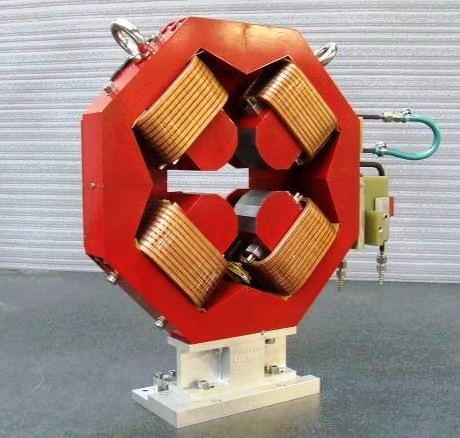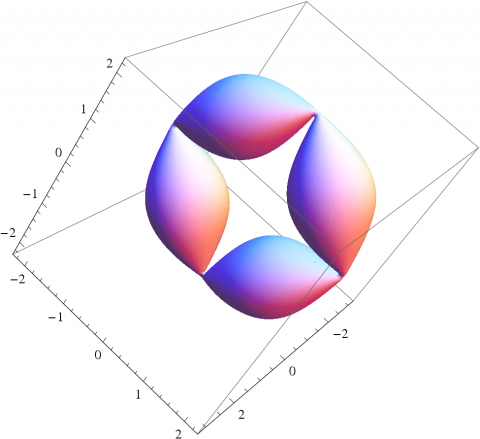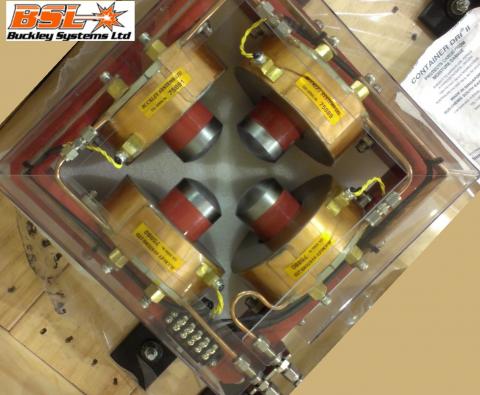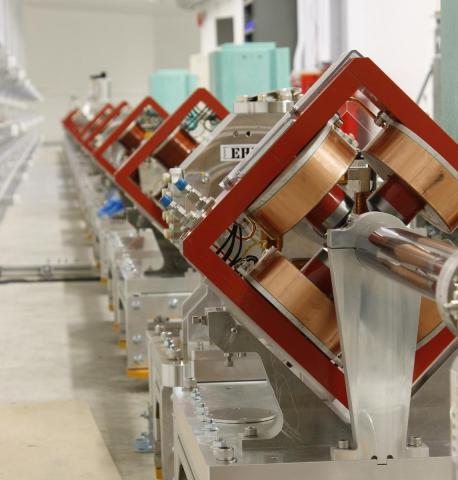



For years labs all over the world have been using a quadrupole magnet design that works perfectly on paper – that is, in two dimensional space – but less than perfectly in three dimensional reality. These quadrupoles were designed in the 1970s to be used in particle accelerators, and the design has not changed much since. Rick Baartman, head of the Beam Physics group at TRIUMF, re-evaluated the problem and came up with a new and improved quadrupole design.
Quadrupoles are four-poled magnets with alternating north and south poles. They are used to focus a beam of charged particles and guide it down the beam line. To create a given force on the charged particle beam, quadrupoles can be long and weak or short and strong. It is well known in the particle accelerator community that the shorter your quadrupole magnet, the more efficiently and accurately it works. This is because quadrupoles are made of steel, so they are subject to a lagging effect called “hysteresis.” This effect is more pronounced with weaker magnets, so the quadrupoles should be as short as possible.
Previous to Rick’s breakthrough, TRIUMF, like many labs all over the world, used a design that was basically derived from the 2-dimensional one, but truncated in the third dimension (See Fig. 2). Engineers knew the ends should be rounded to minimize the non-intended, non-linear field, but the exact optimal shape was unknown.
Baartman found a key formula in a 1972 Russian paper by Derevjankin [1]. Using Mathematica™ software, he made calculations based on this formula, and found that for the shortest quadrupoles, the poles should ideally look like four American footballs connected end to end in a ring (see Figure 3). However, a “good enough” shape is spherical – just the middle part of the football (see Fig. 4). “I found the way to shape the ends so that you get minimal error from the non-intended field,” says Baartman. “It starts from a complicated idea, but the eventual product is very simple.”
Baartman’s derivation works well for both long and short quadrupoles; in the long case, the poles are not spherical, but are curved in the beam direction rather than straight.
Baartman sent his calculations to Buckley Systems Ltd, a manufacturer of precision electromagnets, who perfected his solution using more detailed magnetic field calculations. Buckley manufactured 70 magnets for TRIUMF using Baartman’s new design, and 40 have already been installed in the ARIEL e-linac.
Congratulations Rick Baartman on this breakthrough achievement!
- [1] G. Derevjankin, Zh. Tkh. Fiz. (USSR) 42, 1178 (1972)
- Photos, from top to bottom: 1. Rick Baartman; 2. Example of non-ideal (truncated) magnet shape; 3. Optimal magnet shape; 4. Magnets with new design, built by Buckley; 5. New quadrupoles installed in the e-linac tunnel
- Baartman's paper
By Kyla Shauer and Jacqueline Wightman, Communications Assistants
